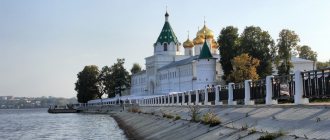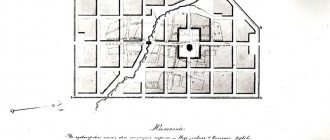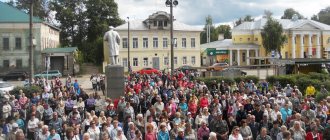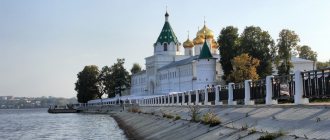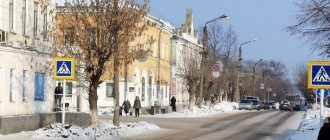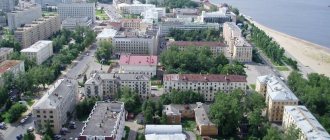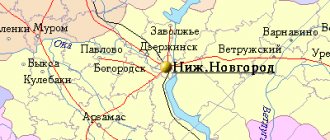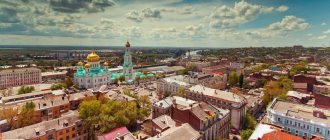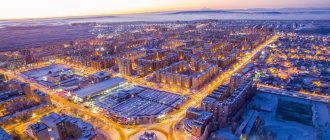Rostov the Great is one of the oldest cities in Russia; the official calendar dates back to 862. Since the 10th century, Rostov has been one of the centers of the Rostov-Suzdal land. In the 11th - early 13th centuries it was part of the Vladimir-Suzdal Principality. On the territory of Rostov there are 326 cultural monuments, a third of which are monuments of federal significance. In 1970, Rostov was included in the list of historical cities of the RSFSR. In 1995, the Rostov Kremlin Museum-Reserve was included in the list of especially valuable objects of cultural heritage of the peoples of Russia. Tourist center of the route “Golden Ring of Russia”
You can get to Rostov by car from Moscow along the M8 federal highway, the distance from the Moscow Ring Road is 215 km, travel time is 3 hours. You can also get from Moscow by rail to Rostov Yaroslavsky station. Since the railway station is part of the Northern Railway, Rostov can be reached by train from almost anywhere in the country.
Rostov history of the city.
Rostov has a very eventful history. The first mention is found in the Tale of Bygone Years in 862. Rostov the Great is mentioned in it as an already existing city. At the beginning of the 11th century, the territory adjacent to it received the name of the Rostov land, and then the Rostov-Suzdal land. In the summer of 991, the Grand Duke of Kiev Vladimir with the metropolitan, four bishops and governor Dobrynya arrived in Rostov and baptized local residents in the waters of Lake Nero.
Rostov the Great has a lot of medieval attractions, it is much older than Vladimir and Moscow, and is considered the same age as Murom and Suzdal.
2. Now Rostov the Great belongs to the Rostov district of the Yaroslavl region.
3. Many people often confuse Rostov the Great with Rostov-on-Don. But these are different cities. Rostov-on-Don is a modern metropolis. Rostov the Great is a small, cozy, original town located not far from Moscow.
4. A reasonable question arises: why is he Great if he is small? But because in the 9th century Rostov was annexed to the state of Rurik. Since the middle of the 11th century, the city has been part of the Rostov-Suzdal Principality. In 1207, the independent Principality of Rostov was formed.
5. During this period, Rostov became one of the large and developed cities in the north-west of Russian lands due to cultural and economic growth. There is a version that this is why the city received an addition to its name and became Rostov the Great.
6. The very first mention of this city was recorded in 862 in the chronicle. However, based on archaeological excavations, a version was compiled about the first fortification on the shores of Lake Nero. It was called the Sarskoye settlement, which appeared already in the 7th century.
7. Rostov itself was formed no earlier than the 10th century. This difficulty in determining the time intervals for the formation of the city is due to the fact that there are several hypotheses. Some historians say that the city already existed in these places before the Slavs appeared. Others believe that it was included in the Sarsky settlement only in the 10th century. It is noteworthy that for some time both of these settlements existed in parallel and peacefully.
8. There is also no exact information why the city is called Rostov. There is a version that its founder was the leader of the Finnish-Ugric tribe Merya Rosta, after whom the city was named. Some associate the name with a shortened version of the Slavic name Rostislav - Rost. When adding the suffix “-ov”, a word is obtained indicating ownership of the founder.
9. Another version is also connected with the name. It is believed that a certain Prince Ross created a city on this site. Later it began to be called “Rossov Stan” - the settlement of Ross, which gradually transformed into Rostov.
10. In Rostov the Great there are more than one hundred cultural and architectural monuments.
11. Officially, Rostov the Great is simply called Rostov. But the word “Great” has long been firmly entrenched in its name. This is exactly how the city was named in the Ipatiev Chronicle, dated 1151.
12.It was founded in 862, which makes it one of the most ancient cities in Russia.
13. Rostov the Great is called the birthplace of original Russian architecture.
14. The “Golden Ring” of Russia includes 8 cities, including Rostov the Great. It is located 50 kilometers from the city of Yaroslavl and is one of the most visited tourist cities.
LAKE NERO
15. The beautiful Lake Nero, on the shores of which Rostov the Great stands, is truly ancient, it was formed before the Ice Age, it is already about 0.5 million years old. Most lakes on Earth last about 10 times less, after which they turn into swamps.
16. Lake Nero is the oldest body of water located in Russia. There are various islands on the lake, both small and large. About eight streams flow into the pit.
17. There is a legend that at the bottom of Lake Nero lie treasures hidden by the Mongol-Tatars. Many are still looking for them, but even studying the lake bottom using special equipment has not brought any results. Most likely, this is really just a legend.
18. Archaeologists claim that there is nothing at the bottom of the lake except for the healing lake silt of sapropel. Some say that if the extraction of this healing silt is developed, Rostov could become a real resort city.
19.However, swimming in the lake is prohibited, since the bottom is too muddy and the water has recently been polluted by city runoff. But despite this, a picturesque view opens onto the shores of the lake. Rostov residents are very proud of their lake.
CITY PARK ON THE SHORE OF LAKE NERO
20.The City Park is located on its coast. Citizens often relax here. Reconstruction work has recently been carried out here. Benches were installed, beautiful paving slabs were laid, and flower beds were laid out. The surroundings are clean and tidy. Various celebrations and performances are often held here.
21.The Metropolitan Garden is located nearby. It is especially cozy and comfortable. There are also beautiful apple trees here. If you wish, you can treat yourself to a fragrant apple.
22. For 400 years to this day, the central part of Rostov the Great has been called a city.
KREMLIN IN ROSTOV VELIKY
23. The main attraction and symbol of the city is the Rostov Kremlin. Unique from an architectural point of view, the Rostov Kremlin looks very unusual. Strictly speaking, this is not quite a Kremlin, that is, a fortress - it was built as a residence for Bishop Jonah Sysoevich, Metropolitan of the Rostov diocese.
24. The Kremlin was built at the end of the 17th century. It stands on the shore of Lake Nero. The temple complex includes church, utility and administrative buildings. The absolutely stunning metropolitan chambers, churches, and high-rise buildings attract many admiring glances. And, of course, the real pearl here is the Assumption Cathedral. It is equipped with a three-span belfry and framed by spectacular bells.
25. On the territory of the Kremlin there are Cathedral Square, the Bishop's Courtyard and the Metropolitan Garden. The Rostov Kremlin was built to demonstrate the power and strength of spiritual authority.
26. The Kremlin, starting from the 20th century, has become a place of attraction for everyone's attention. A wide variety of historical films were filmed here. The most popular filming “Ivan Vasilyevich changes his profession” by Gaidai. Everyone knows this film firsthand. The place was ideal as a filming location.
27. A unique belfry has been preserved in the Rostov Kremlin, all the bells of which were cast by craftsmen back in the 18th century. They even have their own names. And the mass of the largest of the Rostov bells reaches an impressive 33 tons. The Rostov Kremlin is a candidate site for inclusion in the UNESCO World Heritage List.
28. Before the revolution, there were no street names or house numbers in the center of Rostov. The owner's name was simply indicated as an address on the letters.
29. Here you can take a walk through the famous shopping arcades. They appeared here in the mid-19th century, and today they embody the center of commercial life.
30. Industrialist Alexey Kekin had a significant influence on the development of Rostov the Great. He was a generous and noble soul. A native of this city, he lived all his life in St. Petersburg, where he achieved incredible wealth. Kekin built the Rostov Linen Manufactory to provide people with work.
31.In addition, the merchant became famous for his charitable activities. His donations helped in the restoration of the Rostov Kremlin. Thanks to them, the Museum of Church Antiquities was opened and a men's gymnasium was built. Kekin also built the first water supply system in the city for all residents. They also wanted to open a university, but there was a revolution in the country, and the project did not come true.
32. During his life, Alexey Kekin generously engaged in charity work in his hometown, and after his death he bequeathed as much as 2 million rubles to him, which by pre-revolutionary standards is a fabulous sum.
33.In the mansion of A. Kekin there is a museum of merchants. The exhibition center presents the life of the 18th-19th centuries. An experienced guide will tell you in detail about various historical facts. Some of them seem mysterious. Here you can get acquainted with the clothing, furnishings, paintings, and literature of past years.
34.Here you can visit the exclusive old Rotlf manufactory. Its exposition is no less rich. It also belonged to the merchant Kekin. It is interesting that, despite all the unprofitability of the building, the owner did not seek to close it, but always paid due attention to it.
GYMNASIUM IM. A. L. KEKINA
35. There is also a famous gymnasium named after. A. L. Kekina. The educational institution is famous for its truly unique history. It is unlikely that you will find a similar analogue anywhere. The gymnasium consists of two buildings. The establishment was built at the expense of the merchant A. Kekin. The building is made in a restrained classical style, beautifully decorated with stucco and columns.
36. Unlike many other ancient cities, which live mainly on tourism, various industries are well developed here.
37.The city’s coat of arms depicts a silver deer. It is decorated with golden horns, mane and hooves. The coat of arms was established by Empress Catherine the Great in 1778.
38. Rostov the Great became famous for its trades and crafts. The most famous are enamel and black-polished ceramics. Enamel is an artistic painting on enamel.
39.Black-polished ceramics are products made from high-quality black and brown ceramic clay, which is mined in the vicinity of the city. All items made in these styles of applied art look unique and enchanting. And of course locals use them as souvenirs for tourists.
40. Alyosha Popovich, a hero and hero of folk tales, most likely lived in Rostov the Great. Many researchers associate the name of the legendary hero with the name of the Rostov boyar Alexander Popovich, who lived here in the 13th century and was known as a strongman and invincible warrior.
ASSUMPTION CATHEDRAL IN ROSTOV VELIKY
41. The Assumption Cathedral is located on the Cathedral Square of the Rostov Kremlin. This building was built long before the construction of the Kremlin itself. The cathedral was built in 991 and was founded in honor of the baptism of the townspeople. It was the main church of the diocese, so the tombs of princes and bishops have been preserved here. For political reasons, the Assumption Cathedral has been closed since 1935. Its activities resumed in 1991. Now the cathedral belongs to the Russian Orthodox Church.
42. Next to the Assumption Cathedral there is a belfry. Despite the fact that it was built later than the cathedral, its architecture is in the same style. It was built at the end of the 13th century. And then the bells were cast. 15 bells have survived to this day. The largest of them is “Sysoy”. It weighs almost 33 tons. It is followed by the Polyeleos bell, which weighs about 15 tons. The third largest is the Swan bell. Its weight is 8 tons. Each giant is controlled by 3-4 bell ringers. Twice a day you can hear the raspberry ringing over the Rostov Kremlin.
43. The population of the city at the beginning of 2021 was about 40,000 people. The population of Rostov the Great is slowly but declining almost every year.
44. In the village of Varnitsa, not far from Rostov the Great, there is the Trinity-Sergius Varnitsky Monastery. This village is famous for the fact that it was here that Abbot Sergius of Radonezh was born, and deeply religious people constantly come to the monastery.
45. Due to the fact that the historical architectural ensemble of Rostov is well preserved, as well as the Russian traditional color and picturesque nature, historical films are often shot here. Rostov the Great was very fond of directors of Soviet cinema. Gaidai, Ryazanov, Danelia and Bondarchuk (senior) filmed their films here. Of course, the most famous of them is “Ivan Vasilyevich is changing his profession.” There are even tours based on this film.
CHURCH OF NICHOLAS ON SUDOZERIE
46. In Rostov the Great, a church with a complex history deserves attention - St. Nicholas on Podozerie. It was built after the decree of Emperor Peter Alekseevich on the need to erect any stone structures that cross the borders of St. Petersburg. This place is unique.
47.The structure is more like a fortress. The walls are large in height and width. The towers have loopholes and the masonry is massive. One gets the impression of the inaccessibility of the structure that protected the local monks. The Lord's servants had the status of warriors, reliably protecting the object from attacks by ill-wishers.
48. In 2015, Rostov the Great received first place in the “Cultural Capital of Small Towns of Russia” competition, beating two hundred competing cities.
49. Tourists come here from all over the world. It is equally cozy here at any time of the year.
50. Rostov the Great is distinguished by the presence of a large number of objects reflecting the entire history of ancient architecture, traditions and customs of Russia. It is not for nothing that Rostov the Great is visited by a huge number of tourists every year. By the way, the number of city guests far exceeds the number of its residents.
photo from public domain
Rostov history of the city.
Yuri Dolgoruky, the son of Vladimir Monomakh, should be considered the first independent prince. Under him, the lands of the Rostov Principality expanded significantly. He strengthened old cities and founded new ones: Pereslavl-Zalessky, Yuryev-Polsky, Dmitrov, Konstantinov, Moscow. Under him, Rostov the Great received the title “Great”, but Yuri Vladimirovich founded his princely table not in Rostov the Great, but in Suzdal, which is why the principality was called Rostov-Suzdal. After Yuri's death, the principality passed to his son Andrei Bogolyubsky. Under him, they began to build the white-stone Assumption Cathedral.
Rostov history of the city.
In December 1237, the Horde hordes of Khan Batu poured into Rus'. A long period of Horde power over Russia began. After liberation from the Horde yoke, the city began to come to its senses. In the 16th century, Ivan the Terrible took Rostov into oprichnina. This led to the fact that in the last years of the sixth decade of the 16th century, dozens and hundreds of boyars with their wives and children, leaving their usual homes, family estates and graves of their ancestors, had to make sometimes long and difficult journeys to distant and unfamiliar places where they I had to rebuild my life. At the beginning of the 17th century, during the years of the “Great Troubles,” Polish-Lithuanian invaders under the command of Sapieha plundered and burned Rostov the Great. In the 17th century, the city was surrounded by new fortifications - earthen ramparts.
Rostov history of the city.
The greatest glory came to Rostov with the arrival here in 1664 of Metropolitan Jonah. On August 15, 1652, Patriarch Nikon elevated Jonah to the rank of Metropolitan of Rostov and Yaroslavl. The energetic spiritual ruler put all his strength into creating a unified ensemble of the Rostov Kremlin. The builder of the Kremlin, who embodied the Metropolitan’s plan, was the Russian mason Pyotr Dosaev.
In the 19th century, the Rostov Kremlin was in severe desolation; its churches were saved from complete destruction thanks to restoration work that began in 1890. The city survived both revolutions of 1917 relatively bloodlessly and quite calmly. Nevertheless, with the advent of Soviet power, many churches and monasteries were dismantled and destroyed, and the bricks were sold off. Only two churches have been preserved quite well. In general, in the twentieth century, Rostov the Great remained a quiet provincial city, frozen in its development.
Rostov Kremlin.
You need to start your acquaintance with one of the oldest cities in our country from the Rostov Kremlin. The Kremlin is the former residence of the Rostov metropolitans. Built under Metropolitan Ion Sysoevich. At the end of the 19th century, a comprehensive restoration was carried out at the expense of local merchants, and the Museum of Church Antiquities was located in the Kremlin buildings. After the hurricane of 1953, a second restoration was carried out. Currently, most of the Kremlin houses the state museum reserve - “Rostov Kremlin”.
Current data
According to published data from Rosstat in 2021, the population of the city is 1,137,904 units, the Rostov agglomeration is 2.7 million (the fifth agglomeration in the country). It is included in the list of the largest settlements in the Russian Federation in terms of the number of permanent inhabitants, taking 9th place.
An important parameter is density. The parameter displays the number of inhabitants/1 km2. The value for 2021 is 3265.15 inhabitants/km2. The area of the city is 348.5 square meters. km.
Assumption Cathedral.
The main dominant feature of the Rostov Kremlin ensemble is the Assumption Cathedral - the oldest building in the city. The temple was built in 1508-1512. on the site of its white stone predecessors of the 12th - 13th centuries. The majestic volume of the cathedral, covered with keel-shaped roofs, is crowned by a powerful five-domed dome. The internal six-pillar structure of the building on the facades is revealed by pilasters of rather large extension. Numerous decorative elements—arch-columnar belts, horizontal panel rods—give the appearance of the temple a special plastic expressiveness.
Raspberry ringing
Next to the Assumption Cathedral there is a belfry . Despite the fact that it was built later than the cathedral, its architecture is in the same style. It was built at the end of the 13th century. And then the bells were cast. 15 bells have survived to this day. The largest of them is “Sysoy” . It weighs almost 33 tons . It is followed by the Polyeleos , which weighs about 15 tons . The third largest is the Swan . Its weight is 8 tons. Each giant is controlled by 3-4 bell ringers. Twice a day you can hear the raspberry ringing over the Rostov Kremlin.
Churches of the Rostov Kremlin.
On the territory of the Kremlin there are several churches: the Savior on Senya, St. John the Theologian, Hodegetria and Gregory the Theologian, as well as the gate Church of the Resurrection. In addition to the churches, you can see the Red and White (dining) chambers, the House on the Cellars, Samuil's Building and, of course, the walls and towers of the Kremlin, along which you can walk. Various fairs, exhibitions and performances are held on the territory of the Kremlin. The museum is open. Entrance to the territory of the museum-reserve is paid - 50 rubles per person. Exhibitions and master classes are paid separately. Opening hours: 10.00-17.00, seven days a week, except January 1. The fortress walls and frescoes of temples are open for viewing from May 1 to October 1
Spaso-Yakovlevsky Orthodox Monastery.
In addition to the Kremlin, there are several monasteries in the city. We will tell you about one of them. Spaso-Yakovlevsky Orthodox Monastery was founded in 1389 by the Rostov bishop St. Jacob. Located on the shore of Lake Nero in the southwestern part of Rostov. On the territory of the monastery is the Dmitrievsky Cathedral. The cathedral was erected in 1795-1801 in a classicist spirit according to the design of the Moscow architect E. S. Nazarov and the serf architects Sheremetev Mironov and Dushkin.
Gender and age
To obtain an accurate demographic picture, it is necessary to analyze the gender and age composition. According to official data provided by Rostovstat, the proportion of male citizens is 46.4%. The share of women is, respectively, 53.6%. The number of men, according to official statistics, is gradually increasing.
Today in the Rostov region, per 1000 citizens of working age there are 806 residents whose age is above/below the working age. The share of children and adolescents is 17%. Representatives of the older age group – 26.7% of city residents.
Data for the Rostov region
Rostov the Great. Conception Cathedral.
The monastery is decorated with another cathedral, considered the first stone one on the territory of the monastery - the Conception Cathedral. The current cathedral building was built in 1686 in a patterned style. The vaults are supported by four pillars. The altar is separated by a stone wall with an iconostasis. There are arches between the pillars and walls. In the 19th century, the cathedral was surrounded by extensions. Ancient frescoes from 1689 have been preserved inside. The location of the monastery gives it special beauty. It is located on the very shore of the lake, and from the walls of the monastery there is an excellent view.
One day is not enough to explore the city, so you can stay overnight at a hotel near the Kremlin. Or pitch a tent right on the shore of Lake Nero and enjoy its beauty. This is where we end our story about the ancient city of Rostov the Great, the sights of which attract thousands of tourists from different countries, and we hope that you will have time to visit this city.
The mystery of the name
There is no exact information why the city is called Rostov. There is a version that its founder was the leader of the Finnish-Ugric tribe Merya Rosta , after whom the city was named. Some associate the name with a shortened version of the Slavic name Rostislav - Rost. When adding the suffix “-ov”, a word is obtained indicating ownership of the founder. Another version is also associated with the name. It is believed that a certain Prince Ross created a city on this site. Later it began to be called “Rossov Stan” - the settlement of Ross, which gradually transformed into Rostov.
